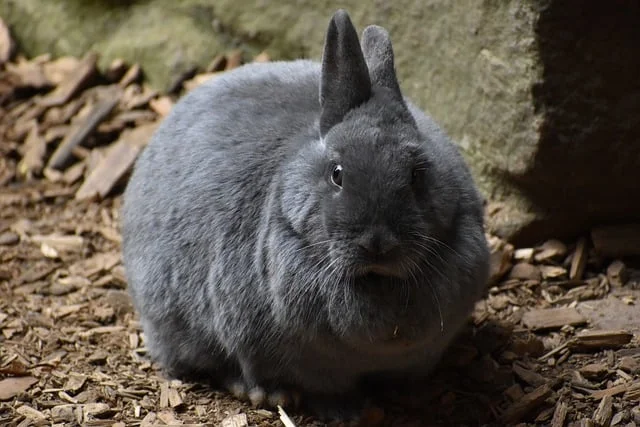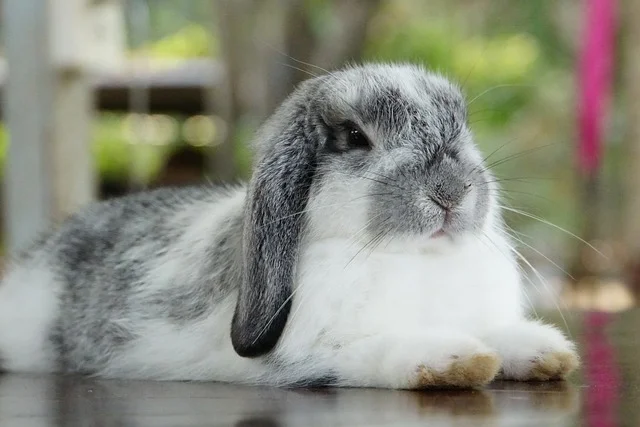Rabbits are adorable and popular pet animals that bring joy and companionship to many households. Their cute fluffy appearance and playful nature make them a favorite choice among pet owners. In this article, we will delve into the world of rabbits, exploring different rabbit breeds, their dietary needs, proper care, essential vaccines, and more. Whether you’re a prospective rabbit owner or simply curious about these lovable creatures, this article will provide you with in-depth information to enhance your understanding and ensure the well-being of your furry companion.
Types of Rabbits
Rabbits come in various breeds, each with its unique characteristics and appearances. Some popular rabbit breeds include:
- Holland Lop
- Netherland Dwarf
- Mini Rex
- Lionhead
- Flemish Giant
- English Lop
- Angora Rabbit
Each breed has its own distinct size, coat type, and temperament, so it’s essential to research and choose a rabbit that aligns with your preferences and lifestyle.

Choosing the Right Rabbit Breed
When selecting a rabbit breed, consider size, temperament, and maintenance requirements. Smaller breeds like Holland Lops and Netherland Dwarfs are well-suited for indoor living, while larger breeds like Flemish Giants require more space outdoors. Additionally, some breeds may be more suitable for families with children, as they tend to be more sociable and gentle. Take your time to understand the characteristics of different rabbit breeds before making a decision.
Setting up a Rabbit-friendly Environment
Creating a suitable living environment is crucial for your rabbit’s well-being. Ensure they have enough space to move around comfortably, both inside their hutch or cage and during supervised playtime. Provide appropriate bedding material, such as hay or paper-based bedding, and ensure proper ventilation. Protecting your rabbit from potential hazards and predators is crucial. Make sure to provide a safe and secure enclosure.
Feeding Your Rabbit
A well-balanced diet is essential for your rabbit’s health. The majority of a rabbit’s diet should consist of hay, which helps maintain its dental health and supports its digestive system. Additionally, provides fresh vegetables, such as leafy greens, and a limited amount of pellets formulated specifically for rabbits. Remember to avoid foods that are toxic to rabbits, such as chocolate, caffeine, and certain fruits and vegetables. Consult with a veterinarian to determine the appropriate feeding schedule and portion sizes for your rabbit.
- Hay is Essential:
- Provide unlimited access to fresh hay (such as timothy or grass hay).
- Hay helps maintain dental health and digestive function.
- Fresh Water:
- Ensure your rabbit always has access to clean, fresh water.
- Use a heavy, spill-proof bowl or a sipper bottle.
- Pellets in Moderation:
- Offer high-quality rabbit pellets in small amounts (1/4 to 1/2 cup per day).
- Choose pellets with high fiber content and limited additives.
- Fresh Greens:
- Provide fresh, leafy greens daily (e.g., lettuce, kale, parsley).
- Introduce new greens gradually to prevent digestive upset.
- Vegetables as Treats:
- Offer a variety of rabbit-safe vegetables (carrots, bell peppers) in small portions as occasional treats.
- Fruits in Moderation:
- Give fruits like apple or banana as an occasional treat (1-2 tablespoons).
- High sugar content means they should be limited.
- Avoid Toxic Foods:
- Never feed chocolate, caffeine, onions, garlic, or avocados to rabbits.
- Some plants like rhubarb and tomato leaves are toxic as well.
- Limit Starchy Foods:
- Limit starchy foods like bread and pasta as they can lead to obesity.
- Monitor Weight:
- Regularly check your rabbit’s weight to ensure a healthy size.
- Consult a vet if you’re concerned about weight changes.
- Treats in Moderation:
- Be cautious with commercial rabbit treats; they can be high in sugar.
- Opt for hay-based treats or homemade options.
- Timed Feeding:
- Establish a feeding schedule to help regulate your rabbit’s diet.
- Consistency can prevent overeating.
- Clean Environment:
- Keep the feeding area clean to prevent contamination of food and water.
- Consult a Veterinarian:
- If you’re unsure about your rabbit’s dietary needs, consult a rabbit-savvy veterinarian.
- They can provide tailored advice for your pet.
- Observe Behavior:
- Watch your rabbit’s eating habits; changes may indicate health issues.
- Loose stool, reduced appetite, or unusual behaviors should be checked by a vet.
- Dietary Changes Slowly:
- Introduce new foods gradually to avoid digestive upsets.
- Monitor for any adverse reactions when introducing new items.
- Consider Age and Activity Level:
- Young, growing rabbits may need more protein.
- Older or less active rabbits may need fewer pellets and more hay.
Proper Rabbit Care
Rabbits require regular care to ensure they remain healthy and happy. This includes:
- Regular health check-ups with a veterinarian
- Nail trimming
- Dental care
- Ear cleaning
- Bathing (if necessary)
By providing proper care, you can prevent potential health issues and ensure your rabbit’s overall well-being.

Grooming Your Rabbit
Grooming is an essential aspect of rabbit care. Different breeds have varying grooming needs. Regular brushing helps prevent fur matting and minimizes hair ingestion, which can lead to digestive problems. Additionally, rabbits may need periodic nail trims and cleaning of their scent glands. Establish a grooming routine and create a positive bonding experience with your rabbit during these grooming sessions.
Exercise and Playtime
Rabbits are energetic animals that require regular exercise and mental stimulation. Make sure to offer your rabbits plenty of chances to play outside their enclosure, while ensuring a safe and supervised environment. Provide toys, tunnels, and objects they can chew on to prevent boredom. Daily exercise helps rabbits maintain a healthy weight, strengthens their muscles, and promotes overall well-being.
Understanding Rabbit Behavior
In order to develop a strong bond with your rabbit, it is crucial to have a good understanding of their behavior. Rabbits communicate through body language and various vocalizations. Pay attention to their behaviors and gestures to decipher their needs and emotions. Building trust and providing a calm and comfortable environment will help your rabbit feel secure and content.
Training Your Rabbit
Rabbits have intelligence and can be trained to some extent. Use positive reinforcement techniques to teach your rabbit basic commands, such as coming when called or using a litter box. With patience, consistency, and rewards, you can establish a bond with your rabbit and enjoy a harmonious relationship.
- Start with Bonding:
- Build trust and a bond with your rabbit before attempting training.
- Spend time petting and interacting with them gently to establish a positive relationship.
- Use Positive Reinforcement:
- Reward good behavior with treats or affection.
- Rabbits respond well to positive reinforcement like small pieces of their favorite vegetables.
- Choose a Quiet Environment:
- Find a quiet, calm space for training sessions to minimize distractions.
- Litter Box Training:
- Most rabbits can be litter trained. Place a litter box in a corner of their enclosure or the area they frequent.
- When they use the box, reward them with praise or a treat.
- Clicker Training:
- Consider using a clicker as a training tool.
- Associate the click sound with treats to mark desired behaviors.
- Basic Commands:
- Start with basic commands like “come” or “stay.”
- Use the command word consistently and reward your rabbit when they follow it.
- Handling and Petting:
- Train your rabbit to be comfortable with being picked up and handled.
- Gradually increase the duration of handling sessions.
- Behavior Modification:
- Address unwanted behaviors like digging or chewing by redirecting their attention to appropriate toys or items.
- Socialization:
- Expose your rabbit to different people, animals, and environments to help them become well-adjusted.
- Target Training:
- Teach your rabbit to touch a target stick (a stick with a small, movable object on the end) with its nose.
- This can be the basis for teaching more complex tricks.
- Consistency is Key:
- Be consistent with your training methods and expectations.
- Use the same cues and rewards each time.
- Patience and Patience:
- Understand that rabbits have individual personalities and may progress at different rates.
- Be patient and avoid forcing your rabbit to do something they’re uncomfortable with.
- Limit Training Sessions:
- Keep training sessions short and positive.
- Rabbits have short attention spans, so frequent, short sessions are more effective than long ones.
- Safety First:
- Ensure the training area is safe and free from hazards.
- Supervise your rabbit closely during training.
- Respect Their Boundaries:
- Pay attention to your rabbit’s body language. If they seem stressed or uncomfortable, give them a break.
- Never punish or shout at your rabbit; this can damage the trust you’ve built.
- Advanced Training:
- Once your rabbit has mastered basic commands, you can explore more advanced tricks like jumping through hoops or agility courses.
Common Health Issues in Rabbits
Rabbits are prone to certain health issues, including dental problems, gastrointestinal stasis, respiratory infections, and parasites. Regular veterinary check-ups are crucial to detect and address any potential health concerns early on. Be vigilant for signs of illness, such as changes in appetite, behavior, or droppings. Consult a veterinarian if you notice any abnormal symptoms in your rabbit.
- Gastrointestinal Stasis (GI Stasis):
- GI stasis is a condition where the rabbit’s digestive system slows down or stops working.
- It can result from factors like a poor diet, stress, dental problems, or lack of exercise.
- Symptoms include reduced appetite, reduced fecal output, and lethargy.
- Dental Problems:
- Rabbits have continuously growing teeth, and dental issues are common.
- Overgrown teeth, misaligned teeth, or dental spurs can cause pain, difficulty eating, and drooling.
- Respiratory Infections:
- Rabbits can develop respiratory infections due to bacteria or viruses.
- Symptoms include sneezing, nasal discharge, labored breathing, and eye discharge.
- Parasites:
- External parasites like mites or fleas can affect rabbits’ skin and fur.
- Internal parasites like worms can also pose a health risk.
- Regular veterinary check-ups and appropriate preventative measures are essential.
- Urinary Tract Issues:
- Rabbits are prone to urinary tract problems, such as bladder sludge or stones.
- Symptoms may include straining to urinate, blood in urine, or reduced urine output.
- Heat Stroke:
- Rabbits are sensitive to heat and can suffer from heatstroke in hot weather.
- Signs include heavy panting, lethargy, and in severe cases, collapse.
- Pododermatitis (Sore Hocks):
- Sore hocks occur when a rabbit’s hock (back foot) becomes irritated or ulcerated.
- It can be caused by inappropriate flooring, obesity, or poor hygiene.
- Ear Infections:
- Ear infections, often caused by bacteria, can affect a rabbit’s balance and hearing.
- Symptoms include head tilting, shaking the head, and discharge from the ear.
- Eye Problems:
- Eye issues like conjunctivitis or dental problems can lead to watery or cloudy eyes in rabbits.
- Obesity:
- Obesity is a significant health concern in pet rabbits.
- Overweight rabbits are more prone to various health problems, including arthritis.
- Injuries:
- Accidents or falls can result in fractures or injuries, particularly if the rabbit is allowed to roam freely.
- Hairball Obstruction:
- Rabbits groom themselves frequently and can ingest hair, leading to hairball formation.
- Hairballs can cause blockages in the digestive tract.
- E. cuniculi Infection:
- This microscopic parasite can affect the nervous system, kidneys, and eyes of rabbits.
- Symptoms vary but may include head tilt, incoordination, and urinary issues.
- Coccidiosis:
- A parasitic infection, coccidiosis affects the intestines and can lead to diarrhea, weight loss, and dehydration.
- Heart Disease:
- While less common, rabbits can develop heart disease, which may lead to respiratory distress and fluid accumulation in the abdomen.
Regular veterinary check-ups, a balanced diet, a clean living environment, and careful monitoring of your rabbit’s behavior and health are crucial for preventing and managing these health issues. If you suspect your rabbit is unwell, consult a veterinarian with experience in rabbit care for proper diagnosis and treatment.
Vaccinations for Rabbits
Vaccinations are vital for protecting your rabbit against dangerous diseases. The primary vaccination recommended for pet rabbits is the Rabbit Hemorrhagic Disease Virus (RHDV) vaccine. RHDV is a highly contagious and often fatal disease that affects rabbits. Consult with a veterinarian to ensure your rabbit receives the necessary vaccinations at the appropriate times.
- Core Vaccination for Rabbits:
- Rabbit Viral Hemorrhagic Disease (RHD):
- RHD is a highly contagious and often fatal disease in rabbits.
- A vaccine called RHDV (Rabbit Hemorrhagic Disease Virus) or RHDV2 is available to protect against RHD.
- Rabbits can be vaccinated against RHD from as early as 30 days old.
- Depending on your location and the prevalence of the disease, your veterinarian will recommend a vaccination schedule.
- Optional Vaccinations:
- Myxomatosis:
- Myxomatosis is a viral disease that can affect rabbits.
- The vaccine for myxomatosis is available, but it’s typically given to rabbits at high risk of exposure, such as outdoor rabbits.
- Consult Your Veterinarian:
- Rabbits should be examined by a veterinarian who specializes in small animals.
- Your vet will assess your rabbit’s specific needs and risks based on factors like age, lifestyle (indoor or outdoor), and local disease prevalence.
- Vaccine Schedule:
- Rabbits may need booster shots to maintain immunity, so follow your veterinarian’s recommended vaccination schedule.
- Some vaccines are annual, while others may be given every few years.
- Monitoring for Adverse Reactions:
- After vaccination, monitor your rabbit for any adverse reactions, such as lethargy, loss of appetite, or swelling at the injection site.
- Report any concerns to your veterinarian immediately.
- Preventative Measures:
- While vaccines can protect against certain diseases, it’s also important to practice good hygiene and maintain a clean living environment for your rabbit.
- Limit exposure to potential disease carriers, such as wild rabbits or insects that can transmit diseases.
- Travel Considerations:
- If you plan to travel with your rabbit or board them at a facility, ensure their vaccinations are up-to-date, as this may be a requirement.
- Importance of Consultation:
- Keep in mind that vaccination recommendations can vary by region and may change over time.
- Always consult your veterinarian for the most current advice on rabbit vaccinations.
Remember that vaccination is a vital part of rabbit healthcare, but it should be combined with other measures to ensure the overall well-being of your pet. Regular check-ups with your veterinarian and a clean, safe living environment are equally important in keeping your rabbit healthy and happy.
Spaying and Neutering
Spaying (for females) and neutering (for males) is an important steps in preventing unwanted pregnancies and certain health issues in rabbits. Spaying or neutering your rabbit can also help reduce behavioral problems and improve their overall quality of life. Consult with a veterinarian to discuss the benefits and appropriate timing for spaying or neutering your rabbit.
Rabbit-Proofing Your Home
Before allowing your rabbit to roam freely indoors, it’s crucial to rabbit-proof your home. Rabbits are curious and can chew on electrical cords, furniture, and plants, which can be hazardous to their health. Secure loose wires, use protective coverings, and ensure toxic substances are safely stored out of reach. Providing a safe environment allows your rabbit to explore and play without any dangers.
- Secure Electrical Cords:
- Use cord protectors or cover cords with protective tubing to prevent chewing.
- Unplug and store cords when not in use.
- Remove Toxic Plants:
- Identify and remove any toxic plants from your home.
- Keep houseplants out of reach or in rooms your rabbit can’t access.
- Protect Furniture and Baseboards:
- Cover or block off furniture legs and baseboards to prevent chewing.
- Consider using bitter-tasting sprays as a deterrent.
- Hide Small Objects:
- Keep small items like remote controls, keys, and small toys out of reach.
- Rabbits may chew on these objects and potentially ingest harmful materials.
- Secure Trash and Recycling Bins:
- Use bins with secure lids to prevent access to potentially dangerous items.
- Dispose of trash promptly.
- Childproof Cabinets:
- Lock or childproof cabinets containing cleaning supplies or chemicals.
- Rabbits can easily access and ingest toxic substances.
- Watch Out for Houseplants:
- Some houseplants are toxic to rabbits. Research safe options or keep them out of reach.
- Protect Carpets and Flooring:
- Use rugs or mats in areas where your rabbit roams to protect flooring.
- Rabbits may dig at carpets or chew on flooring.
- Cover Vents and Wires:
- Block access to heating vents and exposed wires to prevent injury.
- Use baby gates or wire covers to create barriers.
- Keep Doors Closed:
- Ensure that doors to rooms with potential hazards are kept closed.
- Use pet gates if needed.
- Secure Blinds and Curtains:
- Tie up or secure cords from blinds and curtains.
- Rabbits can become entangled in them.
- Check for Small Hiding Spots:
- Rabbits may find small openings to hide or get stuck in.
- Seal off or block access to such spaces.
- Remove Low-Hanging Items:
- Remove low-hanging decorations or items like tablecloths that rabbits can pull down.
- Limit Access to Wires:
- Use cord organizers or hide wires behind furniture to limit access.
- Prevent rabbits from getting tangled in wires.
- Supervise Playtime:
- When your rabbit is out of their enclosure, supervise their activities closely.
- This ensures they don’t get into trouble.
- Provide Safe Chew Toys:
- Offer plenty of rabbit-safe toys and chew items to redirect their natural chewing instincts.
Rabbit-proofing your home is an ongoing process, as rabbits are curious and may find new ways to explore. Regularly inspect your home for potential hazards, and be proactive in keeping your rabbit safe and happy in their environment.
Traveling with Your Rabbit
When traveling with your rabbit, it is crucial to make appropriate arrangements to guarantee their safety and comfort. Invest in a secure carrier that provides adequate ventilation and space for your rabbit to move around. Additionally, bring along their familiar bedding, food, and water to minimize stress during the journey. Consult with a veterinarian for any specific recommendations or requirements when traveling with your rabbit.
Frequently Asked Questions (FAQs)
-
What should I consider before getting a rabbit as a pet?
Before getting a rabbit, consider factors such as available space, time commitment, and the financial responsibilities of proper care, including veterinary expenses.
-
Can rabbits be litter-trained?
Yes, rabbits can be litter-trained. With patience and consistency, they can learn to use a litter box, making cleanup easier.
-
How often should I take my rabbit to the veterinarian?
It is advisable to have your rabbit undergo a check-up at least once a year. More frequently for senior rabbits or if you observe any health concerns.
-
Can rabbits be kept outdoors?
While some breeds are suitable for outdoor living, it’s important to provide a secure enclosure that protects them from predators and extreme weather conditions.
-
Do rabbits require companionship?
Rabbits are social animals and generally benefit from having a rabbit companion. However, introductions should be done carefully and gradually to ensure compatibility.
Conclusion
Rabbits make wonderful companions and can bring immense joy to your life. By understanding their unique needs, providing proper care, and ensuring regular veterinary check-ups, you can create a loving and enriching environment for your rabbit. Remember to spend quality time with your furry friend, as rabbits thrive on social interaction and affection. By demonstrating patience, love, and responsible pet ownership, you can cultivate a lasting and rewarding relationship with your delightful rabbit companion.




